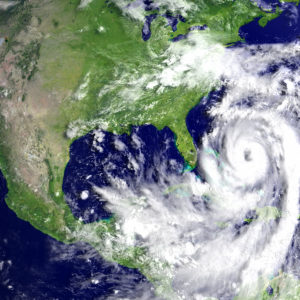As we try to get our economy up and running in the wake of coronavirus, hurricane season threatens to kick us while we’re already down.
Hurricane Isaias was already the 9th storm to hit during this season, and it doesn’t look like things will be slowing down any time soon.
These storms are unavoidable no matter how much social distancing we practice, but we can do our best to prepare for them. And our state and local governments can help by incentivizing preparedness.
Experts have already predicted a busier — and possibly more dangerous — storm season than normal this year. That could mean up to almost 20 storms, with 10 potentially developing into full-fledged hurricanes. Imagine what this could mean for already vulnerable states and localities?
That’s why it’s critical for Americans, especially those in at-risk locations, to stock up on non-perishable foods, first aid kits and — most importantly — bottled water. In fact, the Federal Emergency Management Agency (FEMA) recommends every family has one gallon of water per person for three days in case of emergency.
But when the coronavirus hit, only 61 percent of Americans were stocked up on bottled water before sheltering in place. Perhaps that’s because a growing number of people consider it an environmental taboo to purchase plastic water bottles.
New York City recently banned plastic bottles on city-owned land. San Francisco even banned plastic bottles at airports. Before the virus hit, it seemed like the basic plastic water bottle was under attack, despite the fact that plastic water bottles make up less than one-third of one percent of waste in the U.S.
But there’s a distinct difference between essential plastics that help keep us safe during an emergency, and nonessential plastics that we can, and should, cut back on.
Aside from plastic water bottles, consider plastics used to make safety gear for our doctors and nurses on the frontlines. Much of their equipment — including face guards, gloves, and syringes — is made from plastic and intended to be discarded after one use to prevent the spread of disease.
There’s also the growing need for plastic partitions at grocery stores and other retail locations, not to mention plastic food wrappers that prevent waste. That’s no small feat, considering research shows that the carbon footprint of food waste is roughly three times greater than plastic waste.
Of course, we also have nonessential plastic items, straws being one of the best examples. Though some may find the prominent paper versions to be a sorry substitute, we can all agree that forgoing this type of plastic isn’t much of a threat to our health and safety.
Even plastic containers used for food delivery aren’t as essential. These usually black plastic containers can’t even be recycled — unless you’re looking for some flimsy additions to your Tupperware collection.
Considering plastic bottles make up less than four percent of all beverage containers that end up in landfills, blanket bans or taxes on them don’t do much for our environment. They also do not take into consideration the unintended health and safety consequences of forgoing plastic altogether, especially when preparing for a natural disaster.
Smarter, and safer, policy alternatives should target these less essential plastics instead, and leave vital plastics like water bottles and safety equipment alone.

